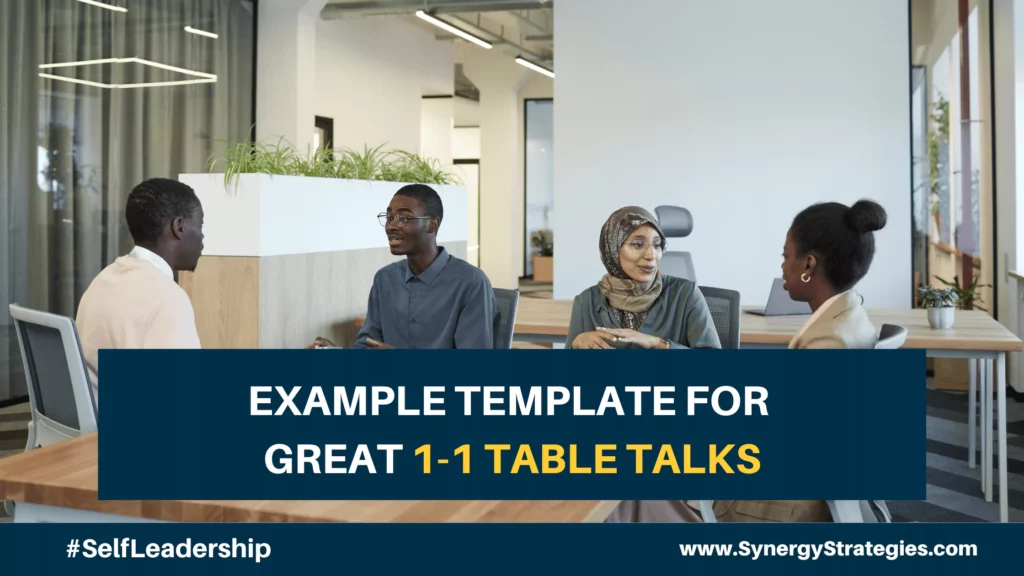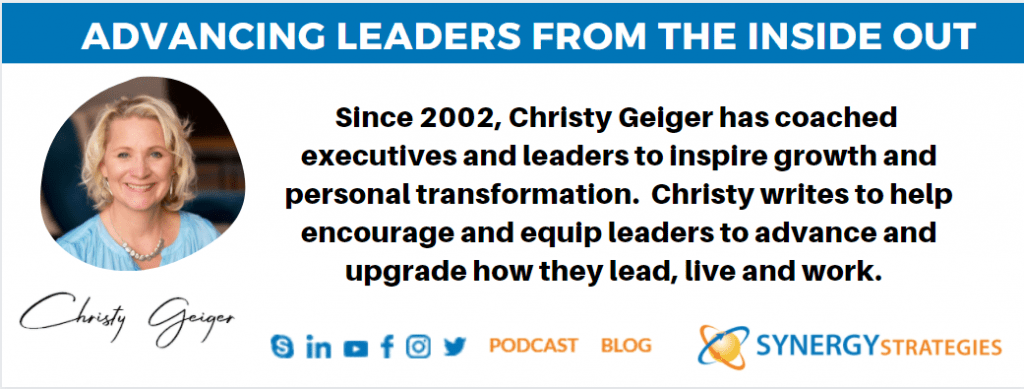Years ago, my husband I were talking about ways for him to better connect with his leaders. Leadership is challenging. The thin line between accountability and micromanagement can be difficult to find. On one hand, a leader can be too suffocating not giving their team members space to learn, experiment, and grow on their own. On the other hand, too much space results in miscommunication, a lack of accountability, and a low-performing organization. We talked through what might be part of a bi-monthly or monthly 1 to 1 conversation. He came up with the arcmin “table talk” to help remember these five key elements.
- T- Table/Team/Culture – Big picture. What is happening? What is happening at work, around you, generally what is on your mind about the organization. What is going on in your table (area of work) and team (people you work with)?
- A – Action & Accountability – What you are doing?: What action have you taken since we met last? What action are you taking next? Where are we on our goals, next steps, etc? Action/What do you need from me? Action/What do I need from you?
- B – Building – Who you are: Persona/Development Building – how are you doing on your personal/family personal/growth and development – what skills were you looking to develop? what is challenging you? What are you learning? What do you need as an individual human being? (check-in re: stressors or burdens happening in the org that might be impacting that could use support or conversation).
- L- Life – What is going on in life, your work, your family, etc. that might impact your work (thoughts, emotions, mindset, energy, etc.)
- E- Encouragement– What you are doing GREAT!: find a way to encourage them – what they are doing well, what you are seeing in and from them, calling them to their full potential, building them up, thanking them, noticing their wins and the wins of the team/group – find a wise thought, book, or positive thing to share with them.
Example questions that the leader and team members would think through and fill out prior to their 1-1.
TEAM MEMBERS FORM for T.A.B.L.E. Talk Prep
(the team member generally leads the conversation with what they are bringing to the table first. The leader is engaged and has follow-up questions and awareness of what should be brought up, but the responsibility is for the team member to proactively bring things to the table rather than depending on the leader to ask and lead the conversation.)
- Table/Team/Culture – Big picture – how are things going with the team from your perspective? How is the culture & team? What is going well, what is not? What needs to be tweaked, talked about, addressed, or upgraded? Any questions you have about the organization or things happening (goals, big picture, etc.)
- Action/Accountability – What are the main tasks on your plate? How are things going? What is on track and good (green)? What has some challenges or concerns (yellow)? What is off-track or needs help/attention (red)? Follow-up on any past commitments. What are your goals? What do you need from your leader?
- Building – What is challenging you? What are you learning? How is your personal growth and skill-building going (soft or hard skills)?
- Life – What’s going on in your life? Anything that may impact your job? Health & Family good? Any vacation, time off, other personal things that might affect you or that you need support around – your leader should have awareness of?
- Encouragement – What are your wins? What are you excited about? What is positive feedback you might have to your leader about the company, culture, team, jobs, them, etc.
LEADER FORM for the T.A.B.L.E. Talk Prep Form
-
- Table/Team/Culture – Any questions, concerns, or observations that I have about their team/customers/area of work?
- Action & Accountability – Check in on any actions or agreements. What do I need from them (that supports the big picture) (budget, planning, culture, commination)? Accountability to their rocks and goals. (Nudge things forward)
- Building – What were their growth and skills goals? What did they agree to work on? Check-in how it is going? Consider other resources that might support that area of learning/skill-building. Cookie approach to a positive feedback where they are doing great (outside cookie), an area that could be upskilled (middle), positive encouragement on how this will help them build on other positive strengths (outside cookie)
- Life – How is their health, family, etc.? Any vacations, time off, etc. needed? Anything I should be aware of or support their needs? (Good time to talk about if they have seemed checked out, distant, moody, emotional, irritable type gaps or situations of concern, etc.)
- Encouragement – Thanks or acknowledgment of something they or their team are doing well. Find a quote or motivational nugget for them to encourage them and be a positive thought for the day or week
1-1’s can be very powerful to build trust, increase communication and accountability. They are instrumental in carving out time and space to be proactive and intentional to connect and run forward together. They are worth the time and can be done in as little as 30 min bi-weekly or 45-60 min monthly.






